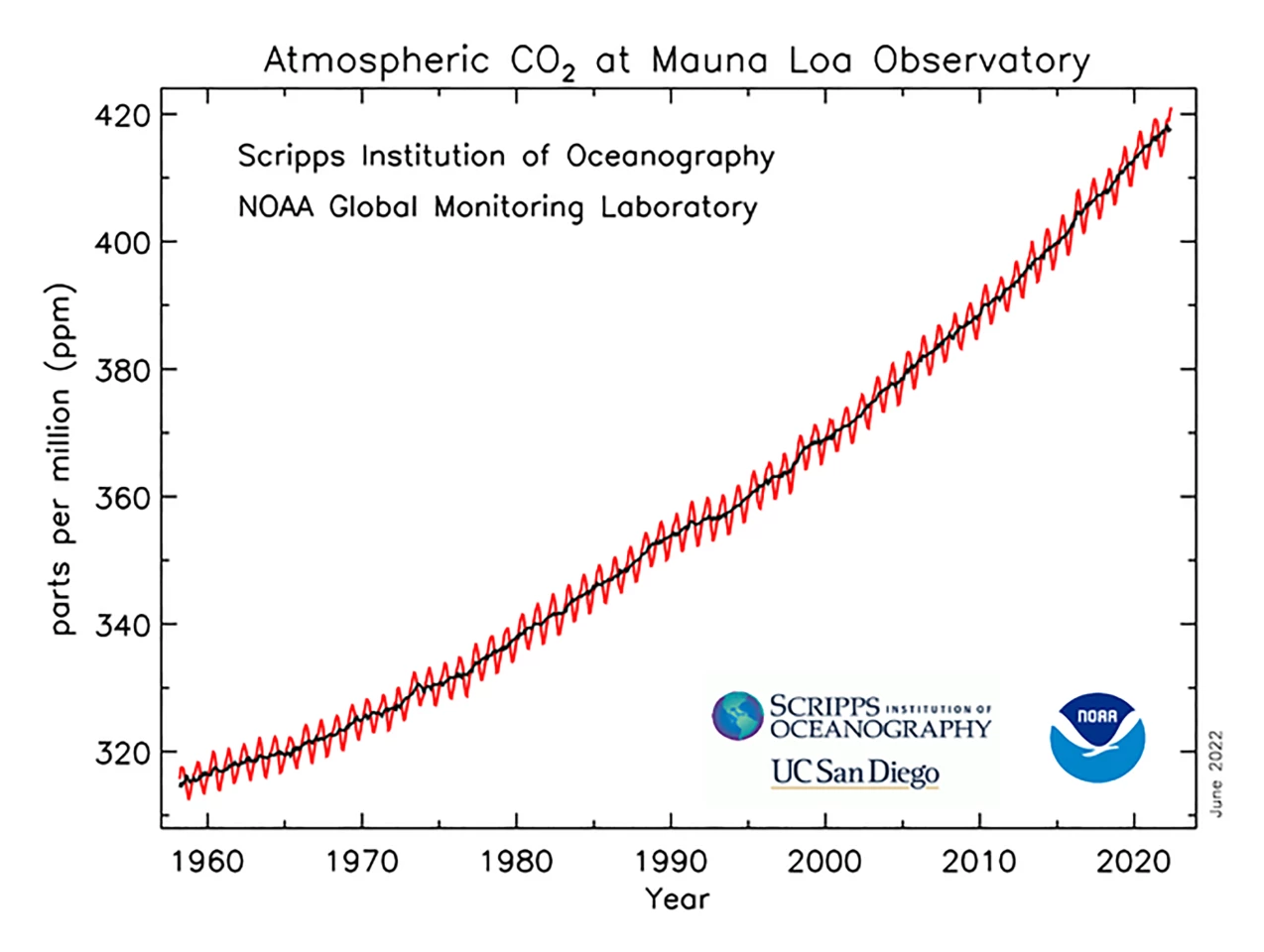Climate scientists have reported the highest levels of carbon dioxide ever recorded in the atmosphere. The latest in a long line of record-breaking years saw the world hit a grim new milestone of 50 percent higher than pre-industrial levels, a concentration not seen in over 4 million years.
Measurements made by the Mauna Loa Atmospheric Baseline Observatory in Hawaii revealed that carbon dioxide in the atmosphere peaked at 420.99 parts per million (ppm) in May. An independent team of scientists at the Scripps Institute was in close agreement, recording a monthly average of 420.78 ppm.
This is the highest CO2 concentration ever recorded in human history – and if that statement sounds familiar, it’s because we’ve been consistently breaking that record over the last few years. In May 2021 the record was set at 419.13 ppm, up from 416.21 ppm in May 2020, and 415.26 ppm in May 2019. For reference, scientists consider 350 ppm a safe level, as reflected in the name of the climate-focused non-profit organization 350.org.

Having breached the 420 ppm milestone for the first time, atmospheric CO2 levels are now 50 percent higher than pre-industrial levels, which consistently hovered around 280 ppm for the almost 6,000 years of human civilization. In fact, Earth hasn’t seen CO2 levels this high for over 4 million years, during a period known as the Pliocene Climatic Optimum.
The relentless increase of carbon dioxide measured at Mauna Loa is a stark reminder that we need to take urgent, serious steps to become a more Climate Ready Nation.
At that point, average temperatures were 3.9 °C (7 °F) higher than the pre-industrial baseline, and sea levels were between 5 and 25 m (16 and 82 ft) higher than today. And since it looks like our record-breaking won’t be slowing down any time soon, we might be headed that way again, with disastrous consequences.
“The science is irrefutable: humans are altering our climate in ways that our economy and our infrastructure must adapt to,” said NOAA Administrator Rick Spinrad. “We can see the impacts of climate change around us every day. The relentless increase of carbon dioxide measured at Mauna Loa is a stark reminder that we need to take urgent, serious steps to become a more Climate Ready Nation.”
Source: NOAA





